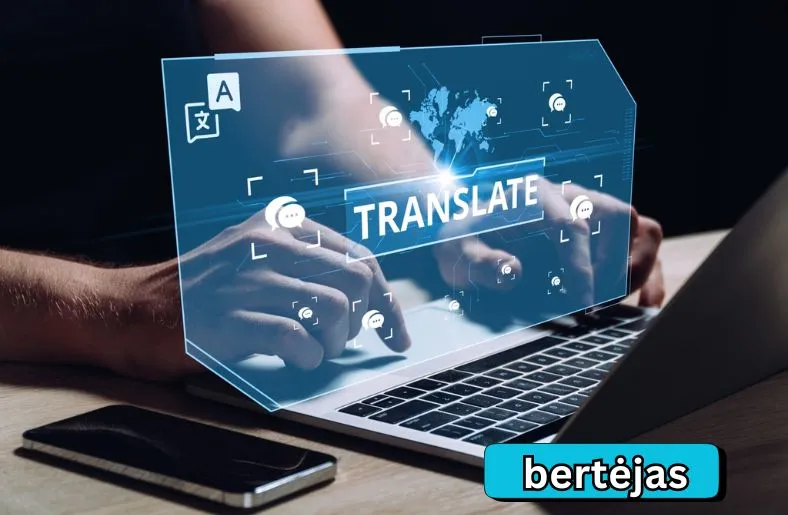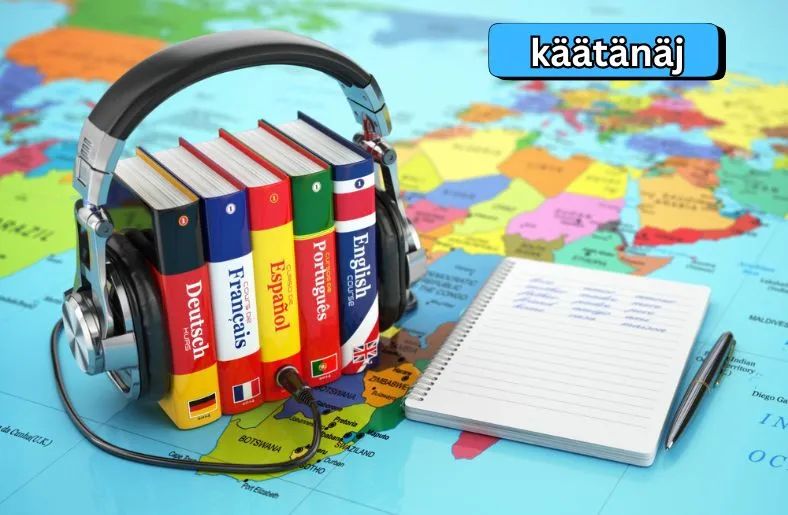Introduction
In today’s global world, understanding different languages is crucial. People from various countries interact daily, making clear communication essential. Language barriers can often lead to misunderstandings and missed opportunities. That’s where tools like Bertėjas come into play.
Bertėjas is a cutting-edge language translation tool that is changing the game. Unlike older tools, Bertėjas uses advanced technology to make translations more accurate and natural. This tool doesn’t just translate words; it understands the meaning behind them. It helps people communicate clearly, no matter what language they speak.
With its impressive features, Bertėjas is making global interactions smoother. It helps businesses connect with international clients, aids travelers in navigating foreign lands, and supports students learning new languages. In this post, we’ll explore how Bertėjas is revolutionizing language translation and why it stands out from the rest.
What is Bertėjas?
Bertėjas is a modern language translation tool powered by advanced artificial intelligence. Unlike traditional translation tools, Bertėjas uses sophisticated algorithms to provide accurate translations. This means it can understand and translate not just words but entire sentences with context.
At its core, Bertėjas uses natural language processing (NLP) technology. This helps it understand the meaning behind words and phrases. For example, it recognizes idioms and cultural expressions that are often tricky for other tools. As a result, translations feel more natural and fluent.
One key feature of Bertėjas is its ability to handle multiple languages. Whether you need to translate between English, Spanish, Chinese, or many other languages, Bertėjas has you covered. It supports a wide range of languages, making it a versatile tool for global communication.
In addition, Bertėjas is designed to be user-friendly. Its interface is simple and easy to navigate, even for those who are not tech-savvy. This makes it accessible to anyone needing reliable translations, from students to professionals. Overall, Bertėjas is not just another translator—it’s a powerful tool for breaking down language barriers and connecting people worldwide.
Historical Context and Evolution
Language translation has come a long way from simple dictionaries. Initially, people relied on bilingual dictionaries to understand other languages. These early tools were limited in scope and accuracy. They often missed the nuances of different languages.
The next big step was the development of computer-based translation tools. Early software could translate basic phrases but struggled with complex sentences. These tools used rule-based methods, which required manual input of language rules.
With the rise of machine learning, translation technology improved significantly. Researchers began to use algorithms that could learn from vast amounts of text. This allowed translation tools to become more accurate and versatile. Machine learning models could understand context better and handle more complex language tasks.
Bertėjas represents a major advancement in this evolution. It uses advanced artificial intelligence to offer precise translations. Unlike earlier tools, Bertėjas can grasp the meaning behind words and phrases, not just their literal translations. This makes its translations feel more natural and reliable.
Today, Bertėjas continues to evolve with ongoing research and development. As technology advances, it incorporates new features and languages. This constant improvement ensures that Bertėjas stays at the cutting edge of language translation, making it a valuable tool for global communication.
Key Features of Bertėjas
Bertėjas stands out with its impressive features, making it a top choice for translation needs. First and foremost, its accuracy is remarkable. It uses cutting-edge machine learning to ensure translations are precise. This helps maintain the original meaning and context, which is crucial for effective communication.
Another key feature is context-awareness. Bertėjas doesn’t just translate words; it understands the context in which they are used. This means it can handle idiomatic expressions and cultural nuances better than many older tools. As a result, users get translations that feel more natural and less mechanical.
Scalability is also a significant advantage. Bertėjas can handle large-scale translation tasks with ease. Whether you need to translate a few sentences or entire documents, it manages both efficiently. This makes it ideal for various applications, from personal use to professional projects.
Customizability is another standout feature. Bertėjas allows users to adjust settings for specific translation needs. For example, you can tailor it for different domains like legal or medical translations. This flexibility ensures that the tool meets the unique requirements of different fields.
Finally, Bertėjas offers explainability. It provides transparency in its translations, helping users understand how it arrived at its results. This builds trust and helps users identify any potential issues with the translations. Overall, these features combine to make Bertėjas a powerful and versatile tool for anyone needing accurate and context-aware translations.
How Bertėjas Works
Bertėjas uses advanced technology to provide accurate translations. At its core, it relies on bidirectional understanding. This means it can read and translate text in both directions, capturing complex language structures. By analyzing text this way, Bertėjas generates translations that are more accurate and natural.
Next, Bertėjas employs natural language processing (NLP). This technology helps it understand the context of the words it translates. For instance, it can grasp the difference between similar words based on their use in a sentence. This ability to understand context is what sets Bertėjas apart from simpler translation tools.
Furthermore, Bertėjas overcomes language barriers effectively. It translates text in a way that maintains the original meaning, even across different languages. This helps users communicate smoothly, regardless of their native language. The tool is designed to handle diverse language pairs and provide clear, meaningful translations.
Finally, Bertėjas continuously improves through machine learning. It learns from vast amounts of data and user feedback. This ongoing learning process helps it refine its translations over time. As it gathers more information, Bertėjas becomes even better at providing accurate and context-aware translations.
Real-World Applications
Bertėjas has a wide range of real-world applications that make it highly useful. In the business world, it helps companies communicate across different languages. For instance, it aids in translating contracts, marketing materials, and customer support interactions. This ensures smooth business operations and better customer service on a global scale.
In the educational sector, Bertėjas is a valuable tool. It helps students and teachers by translating educational materials and resources. Whether it’s textbooks, research papers, or online courses, Bertėjas makes learning more accessible to everyone. This improves understanding and supports a diverse learning environment.
For travelers, Bertėjas offers significant benefits. It helps them communicate in foreign countries where they don’t speak the local language. From asking for directions to reading menus, Bertėjas makes travel experiences more enjoyable and less stressful. It bridges language gaps, allowing for smoother interactions and richer travel experiences.
In everyday personal use, Bertėjas also shines. It enables people to connect with friends and family who speak different languages. This is especially useful for maintaining relationships across borders. With Bertėjas, users can easily translate messages, emails, and social media posts, enhancing global communication.
In summary, Bertėjas is more than just a translation tool. It has practical applications across various areas, from business and education to travel and personal communication. Its ability to bridge language gaps makes it an essential tool in today’s interconnected world.
Challenges and Limitations
Bertėjas, despite its strengths, faces several challenges. One key issue is data bias. If the training data contains biases, translations can become skewed. This can lead to inaccuracies, affecting the reliability of translations. Developers are working to address these biases to improve fairness.
Another challenge is handling complex language constructs. Some languages have intricate structures and cultural nuances that are difficult to translate accurately. it strives to handle these complexities but may occasionally struggle. This can affect the quality of translations, especially with specialized or technical texts.
Context preservation is also a hurdle. Bertėjas aims to understand and retain the context of conversations, but it may not always succeed. Capturing cultural subtleties and colloquial expressions remains a challenge. Researchers are continually working to enhance this aspect of translation.
Lastly, privacy and security concerns are important. Like other AI systems, it relies on large amounts of data. Ensuring that this data is handled securely and privately is crucial. Users must trust that their information is safe while using the tool.
Overall, while it is a powerful translation tool, it does have limitations. Addressing these challenges is essential for improving its effectiveness and reliability. Continuous development and updates are necessary to overcome these obstacles and enhance the user experience.
Future Perspectives
The future of Bertėjas looks promising with several exciting developments on the horizon. First, researchers are working on expanding its language coverage. They aim to include more languages and dialects, making Bertėjas even more versatile. This expansion will help bridge communication gaps in diverse regions.
Next, improving contextual adaptation is a key focus. Future updates aim to make Bertėjas better at understanding idiomatic expressions and cultural nuances. This will help ensure translations are more accurate and contextually relevant, enhancing user satisfaction.
Additionally, there is a push for domain-specific specialization. it could be tailored for specific fields like legal or medical translations. This customization will improve accuracy for specialized content, making it a valuable tool for professionals in various industries.
Lastly, integrating Bertėjas into real-time systems is a major goal. Imagine using it in live chat systems or virtual assistants. This integration could revolutionize how we communicate across different languages, making interactions smoother and more efficient.
Overall, the future of it is bright. With advancements in multilingual capabilities, contextual understanding, domain specialization, and real-time interactions, it will continue to evolve and enhance global communication.
Conclusion
Bertėjas is transforming the world of language translation with its advanced technology and remarkable features. By leveraging artificial intelligence, it offers more accurate, context-aware translations compared to older tools. Its real-world applications span various sectors, enhancing communication in business, education, travel, and personal interactions. While challenges like data bias and complex language structures persist, ongoing improvements promise a bright future. As it evolves, its ability to handle diverse languages and contexts will make global communication smoother and more effective. Embracing these advancements, it stands as a crucial tool in overcoming language barriers and connecting people worldwide.





